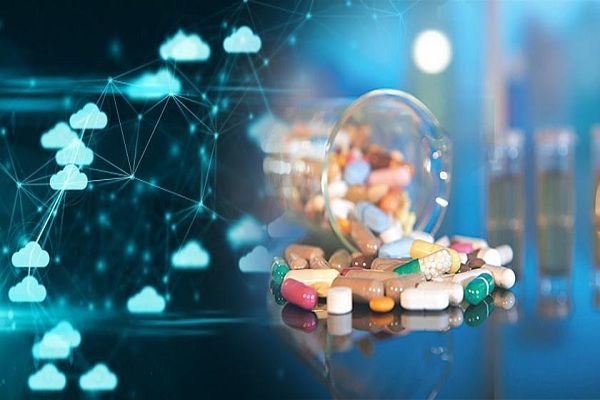
Amongst the most significant trends to watch out for in the pharma industry in 2021 is how consumer behaviour has witnessed a significant acceleration towards e-consultations through live video calls between doctors and patients, e-purchases of medicines by uploading doctor’s e-prescriptions, and home-collection of blood samples. At the same time, the combined power of the Internet, data science, connected devices and AI have expedited the pace of digital transformation in pharma organisations to improve quality and productivity. Skilled manpower in artificial intelligence (AI), machine learning (ML), cloud computing, robotic process automation (RPA), and other technological areas are helping speed up drug repurposing and development of biomarkers.
Faster time-to-market for drug discovery

Al algorithms, Big Data and early-stage experiments using new technologies are helping substantially lower time and costs in bringing new drug formulations to market. The entire research and development cycle spanning data management, clinical trials and testing are now so technology oriented that pharma companies are increasingly on boarding ‘health-tech’ partners and tech start-ups in the journey to drug discovery, hitherto a pure science domain.
Digitization & automation
The manufacturing shop floor in pharma was amongst the first to embrace digitization and automation. It was not just about paperless processes, but also to ensure that quality processes were robust and scalable, with minimal scope for human error. It ensured CGMP compliance in the manufacturing process. Besides, robotic technology and AI have been reducing manufacturing downtime and substantially reducing product wastage.

Also read: India’s pharma industry to witness 11-13 pc growth in FY2020: Icra
From a quality point of view, automation has curbed human intervention associated with increased risk of contamination as well as variability. Also, with serum-dependent processes with lot-to-lot variability, RPA mitigates any lack of proper cell characterization strategies. It has further mitigated business setbacks in the transition of the lab process to manufacturing or in the recurring failures during manufacturing runs. Developers and researchers are integrating their knowledge to develop and have common access to phase appropriate process development (PD) and bio assay services (BAS), removing manufacturing bottlenecks, reducing their cost of goods (COGS), and preparing for commercial readiness in advance.
Biologics including genetic susceptibility and pharmacogenetics, epigenetics & genomes
Instead of developing medicines (small molecules and generics) which start at the point when a disease disrupts the normal healthy life of an individual, the move towards biologics which studies how diseases are expressed or contracted through genetic susceptibility and / or prevented through genetic resistance have spawned a new and rapidly growing interest in pharmacogenetics, epigenetics and genomes – eg. Covid-19 research papers have primarily focused on studies of the virus at the protein levels and how they interact with RNA and DNA. Genetics is expected to generate the maximum amount of new research and development in the pharmaceutical industry moving forward.
Connected virtual & self-monitoring in patient care
The advent of connected devices, wearables and IoT have ushered in a new trend in self-monitoring without having to physically visit a clinic or a doctor. Instead, they have the necessary equipment available at their homes at a fraction of the cost for most self-monitoring needs. The readings are transmitted to a central console of the monitoring healthcare provider or doctor for their review and analysis. Diagnostic healthcare is fast moving towards such connected devices, with AI and the Internet providing the first level diagnostics followed by a prognosis and final review by an expert doctor before actual prescription. This is empowering both patients (customers) and doctors to be connected virtually and has spawned a whole system of healthcare integrators and aggregators bringing experts and patients on a self-monitoring virtual healthcare platform.
Governments across the globe are realising how such connected healthcare systems are not only more flexible but also extremely efficient. AI-enabled diagnosis and prognosis for review by consulting expert doctors has already gained substantial traction even in hospitals and clinics where the number of patients is high. Connected healthcare is going to be the new normal from 2021.
Global collaboration in compliance & regulatory conditions
Covid-19 has ushered in collaboration, and not competition, amongst each country’s pharmaceutical regulatory bodies. And though the US government has voiced its displeasure with the WHO, this global collaboration in healthcare – both research and compliance – is only going to get more deeply entrenched moving forward. Regulatory bodies like US FDA, and EMA are going to strengthen the WHO in its ways of working. Automation software for common standards and compliances are going to be universally implemented since it impacts humanity at large.
As the world rapidly takes to the convenience of healthcare solutions through technology, the pharma industry is presented with the challenge to ensure that their workforce is as adept at addressing this demand and can keep up with the speed of adoption by customers. Pharma companies need to upskill and train their personnel in the latest developments and ways of working with customers at various touch points.
(Disclaimer: The writer Sanjeev Goel is Business Head, Manipal ProLearn. Views expressed are a personal opinion.)
Be a part of Elets Collaborative Initiatives. Join Us for Upcoming Events and explore business opportunities. Like us on Facebook , connect with us on LinkedIn and follow us on Twitter , Instagram.












